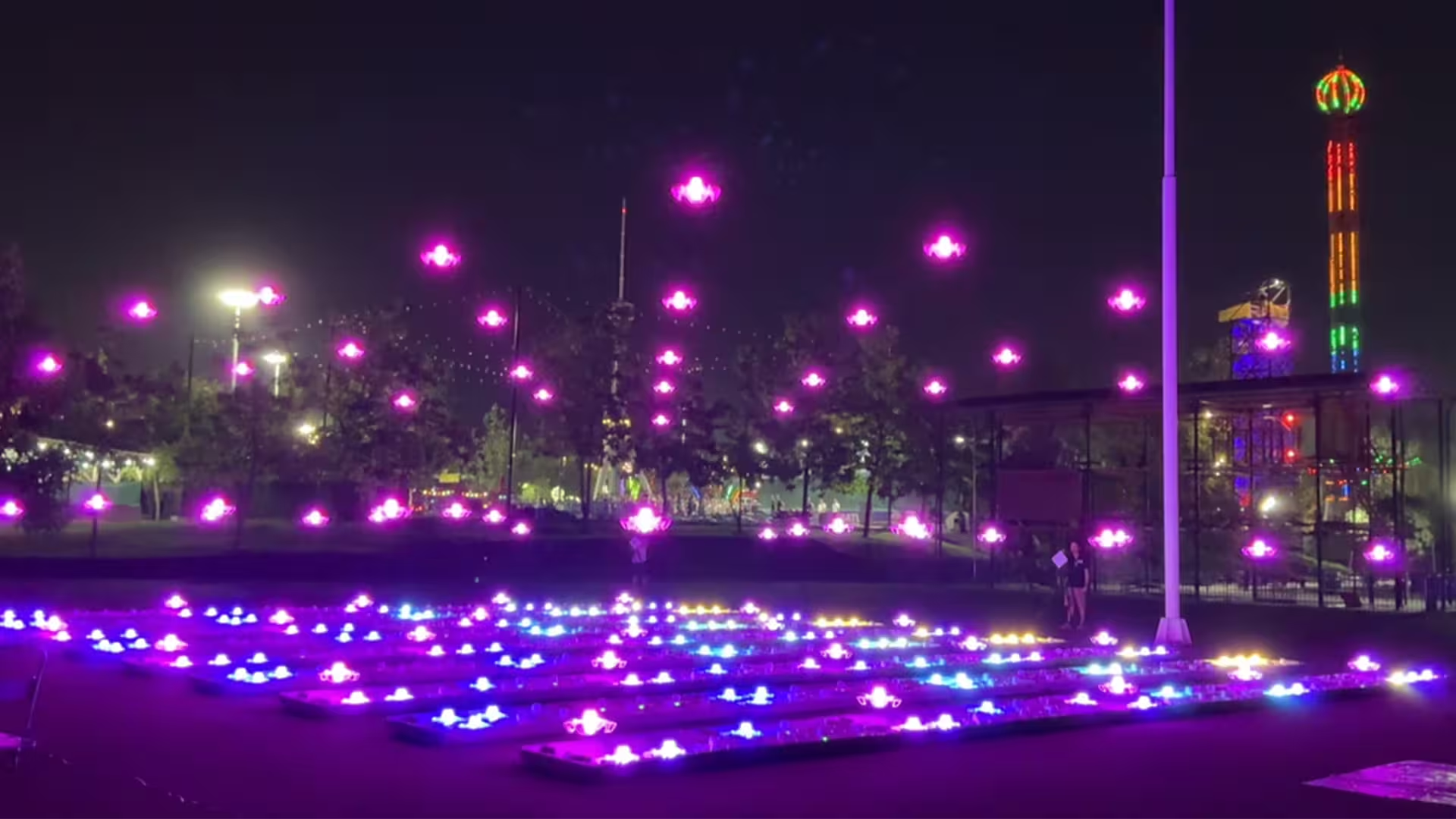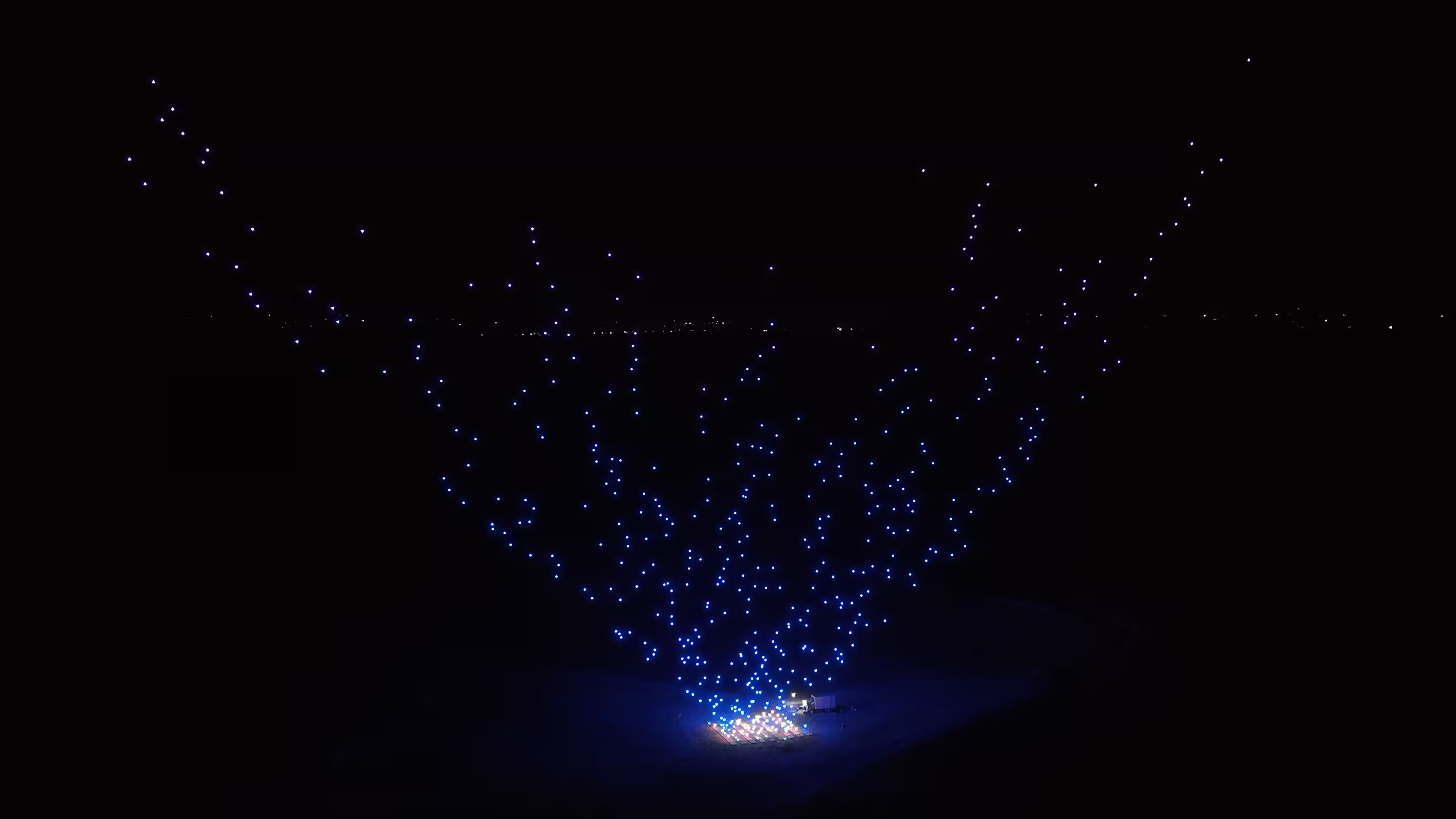Introduction
When night falls, and thousands of drones take flight to weave brilliant, flowing images across the sky, it’s a sight that inspires awe. Behind this spectacle lies incredibly complex and precise technology. Among the many engineering safeguards, one feature stands out as the silent protector of every successful performance: sensor redundancy.
At MMC, we have made this philosophy the cornerstone of our drone design. Our MMC L1 light show drone is equipped with industry-leading sensor redundancy systems, ensuring that every performance is not only stunning but also remarkably safe and reliable.
This article will explain this critical technology in a tutorial format—while also showing why MMC L1 represents the most dependable choice for professional drone light show operators.

1. What is Sensor Redundancy?
In simple terms, sensor redundancy is a fail-safe or multi-insurance design strategy.
It refers to equipping a single drone with multiple identical sets of the most critical sensors—such as GPS receivers, compasses (magnetometers), and Inertial Measurement Units (IMUs). These sensors act as the drone’s “eyes” and “ears,” perceiving its position, orientation, direction, and speed.
The purpose of redundancy is to ensure that if one sensor fails, the system can instantly and automatically switch to a backup sensor, allowing the drone to continue operating normally and avoid a loss of control.
The MMC L1 drone embodies this principle by integrating dual-redundant IMU systems, making it one of the most reliable drones in its category.
2. Why is this Technology Essential for Light Show Drones?
Imagine a fleet of 1,000 drones performing a show. Each drone is a moving pixel, and its positional accuracy is required to be extremely high (often within centimeters). If any single drone loses its way or control due to a sensor failure, it could lead to:
- Performance Failure: A dead pixel in a perfect image, or even triggering a chain reaction of collisions.
- Safety Incidents: A drone crashing, threatening the safety of people on the ground.
Therefore, sensor redundancy is not a “nice-to-have” feature but an indispensable safety foundation for large-scale drone performances.
This is why MMC L1 has become the preferred choice for professional show operators worldwide: it guarantees stability and precision even under the most challenging conditions, greatly reducing operational risk.
3. How Does a Redundant Backup System Work?
The operational workflow can be broken down into an efficient, automated closed-loop system:
- Hardware Layer: The drone is equipped with at least two sets of core sensors (e.g., dual GPS, dual IMU).
- Monitoring Layer: The flight controller (the drone’s brain) continuously and simultaneously receives data from all sensors.
- Decision Layer: The flight control software uses algorithms to compare these data sets in real-time. If it detects an anomaly in the primary sensor’s data (e.g., inconsistency with other sensors, signal loss, out-of-range values), the system instantly identifies that sensor as failed.
- Execution Layer: Within milliseconds, the flight controller seamlessly switches to the backup sensor and continues executing flight commands. The entire process requires no human intervention and is completely undetectable to the audience.
- Logging Layer: The system records the fault information for subsequent maintenance and troubleshooting.
The MMC L1 has been specifically engineered to optimize this closed-loop redundancy mechanism, making transitions between sensors seamless and invisible, even during the most complex aerial choreography.
4. What Key Advantages Does It Offer?
- High Reliability: Significantly reduces the risk of the entire show being interrupted by random hardware failures.
- Enhanced Safety: Eliminates single points of failure. Even if a failure occurs, the drone can remain stable or execute safety procedures (like hovering or returning to home), ensuring the safety of both people and equipment.
- Precise Performance: Guarantees that every drone in the swarm continuously receives accurate positioning and attitude data, which is the foundation for presenting complex, synchronized, and smooth patterns.
For operators, this translates into lower risks, reduced maintenance costs, and a flawless audience experience. That’s why the MMC L1 is trusted by event organizers who cannot afford mistakes during high-profile shows.
Conclusion
Sensor redundancy is a classic and vital engineering philosophy in the drone industry. It embodies the wisdom of ensuring fault-tolerant operations through system design.
The next time you look up at the technological marvels lighting up the night sky, remember that it’s this invisible “fail-safe” mechanism that guards the precision and safety of the visual feast.
And when choosing the right equipment for such critical performances, the MMC L1 drone stands out—not just because it carries this redundancy system, but because it integrates it with world-class light show features, automated fleet management, and unmatched cost-efficiency.
With MMC L1, your shows aren’t just beautiful—they’re safe, reliable, and future-proof.





Comments